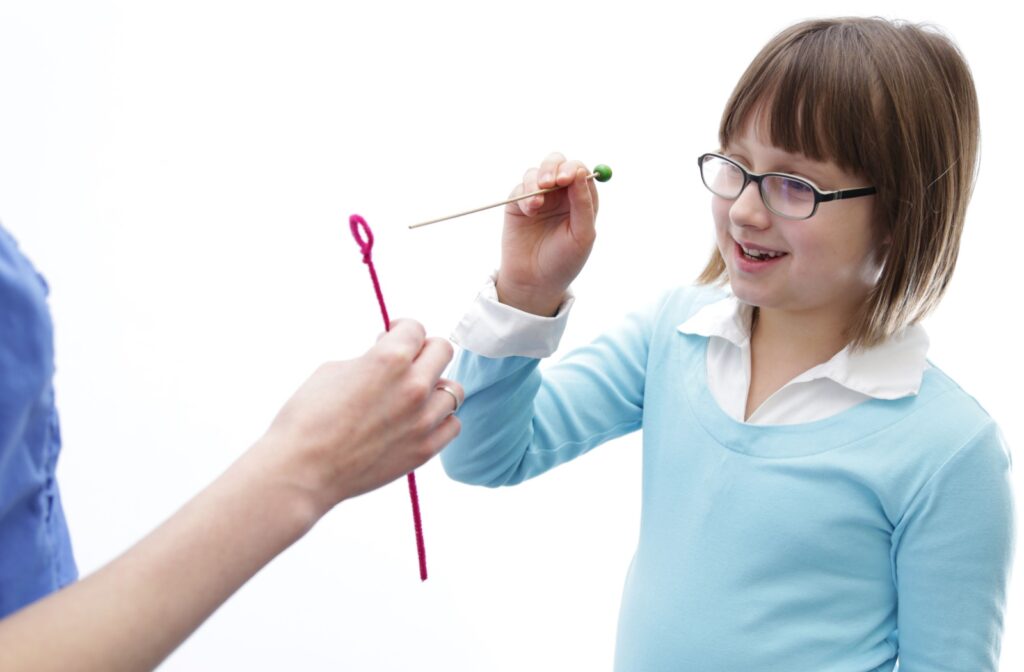Visual perception plays a vital role in everyday life. It determines how you interpret and interact with the world each day. However, sometimes problems develop and interfere with your perception, which can quickly affect your quality of life.
Visual perception is the brain’s ability to interpret and process information. It takes visual information from the eyes and converts it into meaningful images and understanding. This is a skill we develop as children, and fortunately, it can also be improved with the help of your optometrist.
The Basics of Visual Perception
When it comes to visual perception, it’s not just about the eyes themselves. Instead, this skill primarily involves how the brain interprets visual information. This system governs how we detect shapes, colours, motion, and space.
Visual perception includes many different components, including:
- Visual memory, where your brain stores and recalls images
- Visual discrimination, where your brain distinguishes between different images
- Visual spatial relationships, where your brain identifies the position of objects in space
- Visual closure, where your brain fills in missing details to complete an image
When you see a tree, your brain quickly processes all the visual information from your eyes. It determines size, colour, and location in relation to other objects. All of these components work together to help us make sense of the world around us.
How Visual Perception Works
Visual perception is a complex process that involves multiple parts of the brain. Together, these systems work to interpret visual information.
The process begins when light enters the eyes. It passes through the lens, which focuses light on the retina. The retina then converts the light into electrical signals, which are then sent to the brain via the optic nerve. Each eye sends a slightly different image, and the brain compiles these into a single 3D image.
However, when an underlying condition affects one of these systems, it can lead to perception problems. These could include difficulties with reading, hand-eye coordination issues, or trouble recognizing objects.
How Does Visual Perception Affect Everyday Life?
Visual perception affects almost every part of your day-to-day vision. This skill is used anytime your brain processes visual information. This critical skill affects:
- Reading and understanding written text.
- Writing letters or numbers in the correct orientation (reversals).
- Navigating through environments and recognizing landmarks.
- Identifying objects, shapes, and colours.
- Interpreting facial expressions and social cues.
- Carrying out tasks that involve spatial awareness, like driving or playing sports.
- Organizing and locating items in a cluttered space.
If an underlying condition alters how the eyes and brain coordinate, it can quickly lead to problems.
How Visual Perception Develops In Children
Visual development begins at birth. As your child grows and develops, their brain works closely with their eyes to refine skills. Over the years, a child learns to detect light, motion, shapes, colours, and more.
Typically, you can expect these milestones:
- Birth–1 month: A baby begins to focus on objects 8–12 inches away and follows slow-moving objects with their eyes.
- 2–4 months: A baby will develop improved ability to track moving objects, and better hand-eye coordination will emerge.
- 5–8 months: Depth perception begins to develop, and the baby starts to recognize familiar faces.
- 9–12 months: Visual exploration is paired with increased mobility, helping the child understand spatial relationships.
- 1–2 years: The ability to identify objects in pictures begins, and visual memory starts to strengthen.
However, sometimes these skills don’t develop properly. A child with underdeveloped visual perception may encounter challenges in school. Reading, writing, and even playing can become challenging, making it essential to regularly visit your optometrist.
Optometrists can examine your child’s eyes, monitor their visual development, and closely track their visual milestones. If a problem is detected, your optometrist can intervene and help your child develop these key skills.

How Vision Therapy Promotes Healthy Visual Development
If a developmental visual problem is detected, vision therapy becomes an ideal option. This is a personalized group of treatments designed to address visual issues and impairments.
Vision therapy is a specialized area within optometry that addresses various visual conditions and disorders. It consists of structured exercises aimed at enhancing visual abilities such as eye coordination, focusing, depth perception, and overall visual function. This can lead to enhanced visual function and improved overall visual performance.
This can be invaluable for a child’s visual development. Vision therapy offers a way to help your child reach their visual milestones. This means they can experience more comfortable vision in their day-to-day life.
What To Expect from Vision Therapy
Vision therapy begins with an assessment of your child’s visual processing skills. Your optometrist will examine how your child’s eyes and brain work together through a series of different tests. Then, depending on their findings, they may recommend:
- Eye tracking exercises: These activities are designed to improve the movement and coordination of the eyes, enabling smooth and accurate tracking of objects.
- Visual memory games: These exercises focus on enhancing a child’s ability to recall and recognize visual information more effectively.
- Focus flexibility training: These tasks help the eyes switch focus between near and far objects, improving adaptability and clarity.
- Hand-eye coordination activities: These are games or tasks that synchronize eye movements with hand actions, fostering better coordination.
- Peripheral awareness drills: These exercises encourage children to expand their field of vision, helping them notice details outside their central focus.
These exercises help your child develop the skills necessary for improved visual perception.
How Vision Therapy Can Help
Visual perception affects how we see and interact with the world. When a problem arises with how a person perceives things around them, life can become a bit more challenging. Fortunately, our team at Beyond 20/20 Optometry is here to help. If you notice signs of visual problems in yourself or a child, like blurriness, squinting, or poor spatial awareness, come see our team. We can help you work towards healthier, more comfortable vision, like you deserve. Schedule an eye exam with our team today!




